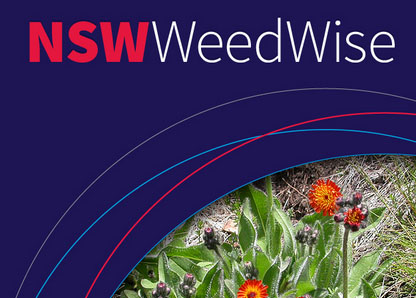Weeds are one of the major threats to the natural environment. They are destroying native habitats, threatening native plants and animals and choking our natural systems including rivers and forests.
Directly or indirectly, all Australians are affected by weeds. Weeds reduce farm and forest productivity, invade crops, smother pastures and some can harm livestock. Land and water managers incur material and labour costs to control weeds - these costs are passed on to the Australian public through higher prices for produce.
The economic cost of weeds
Weeds reduce the quantity and quality of Australia's agricultural, horticultural and forestry products, affecting both industry and consumers. It is estimated that weeds cost Australian farmers around $1.5 billion a year in weed control activities and a further $2.5 billion a year in lost agricultural production. The real cost of weeds to the environment is difficult to calculate, however it is expected that the cost would be similar to, if not greater than, that estimated for agricultural industries.
The impact of weeds on the environment
Weeds are one of the major threats to Australia's natural environment. Major weed invasions change the natural diversity and balance of ecological communities. These changes threaten the survival of many plants and animals because the weeds compete with native plants for space, nutrients and sunlight.
Almost all of Australia's native vegetation communities have been invaded, or are vulnerable to invasion by exotic species that could result in changes to the structure, species composition, fire frequency and abundance of native communities.
Nationally, invasive plants continue to invade the land with exotic species accounting for about 15% of flora. About one-quarter of them are either serious environmental weeds or have the potential to be serious weeds.
Weeds may out-compete native plants because:
- they may not be affected by the pests or diseases that would normally control them in their natural habitats
- the disturbed environment provides different conditions that better suit the invading weed.
As a result the weed may:
- grow faster than native plants and successfully compete for available nutrients, water, space and sunlight
- reduce natural diversity by smothering native plants or preventing them from growing back after clearing, fire or other disturbance
- replace the native plants that animals use for shelter, food and nesting.
Weeds are often excellent at surviving and reproducing in disturbed environments and are often the first species to colonize and dominate in these conditions.
Weeds in the ocean spread over wide areas in a very short time. Introduced seaweeds came to Australia in the early 1980s in the ballast water of ships. They are now invading marine environments along the coast of south-eastern Australia.
The impact of weeds on agriculture
Weeds reduce farm and forest productivity, they invade crops, smother pastures and in some cases can harm livestock. They aggressively compete for water, nutrients and sunlight, resulting in reduced crop yield and poor crop quality. For example, prickle bushes such as Gorse, Blackberries, Prickly Acacia, Parkinsonia and Mesquite can invade vast areas of grazing land preventing productive use of that land.
Weeds contaminate produce, for example:
- Burrs in wool contaminate fleeces
- Grain milled with Saffron Thistle or Amsinckia results in discoloured flour
- Animals that eat specific weeds, such as wild garlic, produce tainted milk and meat
- Spines on fruit of Caltrop and Spiny Emex can damage the feet of stock animals
- Paterson's Curse irritates the udders of dairy cows and can kill horses
- Hemlock can be lethal to both stock and people.
Weeds can also affect the operation of farm machinery.
Farmers spend a large amount of time and money managing weeds. Despite control efforts, a recent Australian Bureau of Statistics survey of issues facing the agriculture industry found that weeds were the most commonly reported natural resource management issue affecting landowners. Weed-related issues affected 73% of Australian agricultural establishments during 2004-05. This compares to 46% of farmers reporting soil and land issues and 38% reporting water issues.
The impact of weeds on human health
Weeds can also cause human health problems. Many common weeds such as Parthenium Weed, Ragweed, Rye Grass and Privet cause asthma and other respiratory problems, especially in children. Some weeds can also cause skin irritation and some are poisonous.
Some water weeds such as Water Hyacinth (Eichhornia crassipes) and Cabomba (Cabomba caroliniana) can affect the quality of our drinking water if infestations are not managed within water supply dams.
There are no common characteristics of a poison or harmful weed that would help distinguish them. But as a general rule, plants with a bitter taste, unusual smell, milky sap or red berries may be poisonous with some plants having poisonous roots and bulbs.

